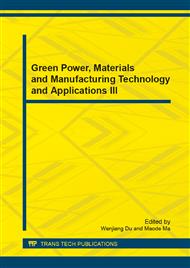p.799
p.803
p.808
p.812
p.817
p.824
p.829
p.833
p.837
Cumulative Absolute Velocity Parameter and LABVIEW Implementation
Abstract:
Based on the original CAV formula definition given by the electric power research institute in the United States, the continuous integral formula is discretized so that it can be better applicable to the actual application requirements, and also the shaded area calculation method necessary in the process of calculation is further proposed. Finally, this algorithm is implemented with LAVIEW program, and also the simulation data and the CAV calculation result of the real Lushan earthquake acceleration data were given so that the algorithm was fully validated, and also a solid foundation was further laid for the deeper CAV-related parameter study.
Info:
Periodical:
Pages:
817-823
Citation:
Online since:
January 2014
Authors:
Price:
Сopyright:
© 2014 Trans Tech Publications Ltd. All Rights Reserved
Share:
Citation:


